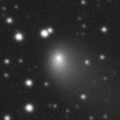
|
Now it is 9.9 mag (Dec. 1, Carlos Labordena). It is expected to brighten up to 8 mag in 2020. It stays observable in good condition for a long time in the Northern Hemisphere. In the Southern Hemisphere, it will be unobservable soon. Then it is not observable until July.
Date(TT) R.A. (2000) Decl. Delta r Elong. m1 Best Time(A, h)
Dec. 7 4 41.76 48 32.2 1.598 2.520 153 9.8 23:37 (180, 76)
Dec. 14 4 22.18 50 54.1 1.555 2.456 149 9.7 22:50 (180, 74)
|

|
Now it is 11.3 mag (Dec. 4, Maik Meyer). It stays bright as 11 mag until winter. It stays observable in good condition for a long time in the Northern Hemisphere. In the Southern Hemisphere, it will be unobservable soon. Then it will never be observable again.
Date(TT) R.A. (2000) Decl. Delta r Elong. m1 Best Time(A, h)
Dec. 7 23 42.41 39 11.2 2.609 3.135 113 11.6 18:39 (180, 86)
Dec. 14 23 36.66 39 14.4 2.709 3.141 107 11.6 18:19 (149, 85)
|
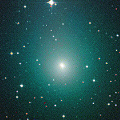
|
It brightened up to 8.3 mag in September (Sept. 20, Maik Meyer). Now it is fading. It has already faded down to 13.1 mag (Nov. 19, Chris Wyatt). In the Southern Hemisphere, it stays observable for a long time after this. In the Northern Hemisphere, it will be unobservable in early December.
Date(TT) R.A. (2000) Decl. Delta r Elong. m1 Best Time(A, h)
Dec. 7 21 40.65 -44 44.2 2.195 1.938 61 13.3 18:18 ( 18, 7)
Dec. 14 21 45.38 -45 14.0 2.359 2.000 56 13.6 18:19 ( 21, 5)
|
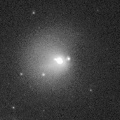
|
Now it is 14.7 mag (Nov. 19, Chris Wyatt).
Date(TT) R.A. (2000) Decl. Delta r Elong. m1 Best Time(A, h)
Dec. 7 0 24.98 13 2.8 5.278 5.781 116 13.3 19:22 ( 0, 68)
Dec. 14 0 25.36 12 55.4 5.382 5.782 109 13.4 18:55 ( 0, 68)
|
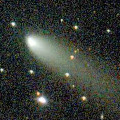
|
Now it is 12.2 mag (Nov. 29, Toshihiko Ikemura, Hirohisa Sato). It will fade out rapidly after this. It is observable in excellent condition in the Northern Hemisphere. It stays locating extremely low in the Southern Hemisphere.
Date(TT) R.A. (2000) Decl. Delta r Elong. m1 Best Time(A, h)
Dec. 7 2 25.21 47 40.5 0.829 1.713 141 13.9 21:22 (180, 77)
Dec. 14 2 29.07 46 33.1 0.894 1.755 138 14.3 20:59 (180, 78)
|
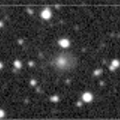
|
Now it is bright as 13.5 mag (Dec. 4, Chris Wyatt). It stays 14 mag until spring. It stays observable for a long time in the Southern Hemisphere. It is hardly observable in the Northern Hemisphere.
Date(TT) R.A. (2000) Decl. Delta r Elong. m1 Best Time(A, h)
Dec. 7 14 54.72 -84 5.2 3.784 3.440 62 14.0 5:24 (354,-33)
Dec. 14 16 49.89 -85 58.8 3.777 3.441 62 14.0 5:29 (355,-35)
|
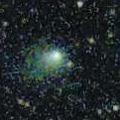
|
Now it is 14.0 mag (Nov. 29, Toshihiko Ikemura, Hirohisa Sato). It will be fading slowly after this.
Date(TT) R.A. (2000) Decl. Delta r Elong. m1 Best Time(A, h)
Dec. 7 21 6.33 -14 26.3 2.087 1.817 60 14.3 18:18 ( 39, 31)
Dec. 14 21 24.97 -13 40.0 2.151 1.829 57 14.4 18:19 ( 42, 31)
|
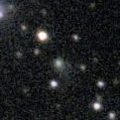
|
Now it is 14.5 mag (Nov. 28, Toshihiko Ikemura, Hirohisa Sato). In the Northern Hemisphere, it is observable at 14 mag in excellent condition in winter. It locates low in the Southern Hemisphere.
Date(TT) R.A. (2000) Decl. Delta r Elong. m1 Best Time(A, h)
Dec. 7 2 15.98 35 45.9 0.724 1.626 143 14.5 21:13 (180, 89)
Dec. 14 2 21.44 32 52.5 0.732 1.611 139 14.5 20:51 ( 0, 88)
|
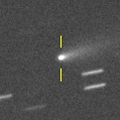
|
Now it is 15.4 mag (Dec. 4, Chris Wyatt). It is observable at 14.5 mag in good condition in winter. It locates somewhat low in the Southern Hemisphere.
Date(TT) R.A. (2000) Decl. Delta r Elong. m1 Best Time(A, h)
Dec. 7 10 36.30 12 47.9 1.390 1.818 98 14.7 5:24 (353, 68)
Dec. 14 10 48.32 12 18.4 1.342 1.829 102 14.6 5:20 ( 0, 67)
|

|
Now it is 14.2 mag (Dec. 2, Chris Wyatt). It will be fading slowly after this. In the Southern Hemisphere, it becomes low from February to March, but it stays observable for a long time. In the Northern Hemisphere, it is not observasble until summer in 2020.
Date(TT) R.A. (2000) Decl. Delta r Elong. m1 Best Time(A, h)
Dec. 7 21 26.51 -68 50.4 3.634 3.279 61 14.7 18:18 ( 10,-16)
Dec. 14 21 39.24 -66 2.5 3.708 3.303 58 14.8 18:19 ( 13,-14)
|
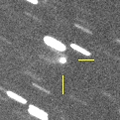
|
Now it is 14.8 mag (Dec. 1, Toshihiko Ikemura, Hirohisa Sato). It stays at 14.5-15 mag until December. It is observable in good condition in the Southern Hemisphere. It locates somewhat low in the Northern Hemisphere.
Date(TT) R.A. (2000) Decl. Delta r Elong. m1 Best Time(A, h)
Dec. 7 21 17.81 -11 57.6 1.987 1.788 63 14.8 18:18 ( 37, 35)
Dec. 14 21 33.54 -9 56.9 2.045 1.791 61 14.9 18:19 ( 42, 35)
|

|
It brightened up to 7.7 mag in June in 2018 (June 19, Juan Jose Gonzalez). Now it is fading. It has already faded down to 15.1 mag (Nov. 6, Toshihiko Ikemura, Hirohisa Sato). In the Southern Hemisphere, it stays observable for a long time until the comet will fade out. In the Northern Hemisphere, it stays low for a while.
Date(TT) R.A. (2000) Decl. Delta r Elong. m1 Best Time(A, h)
Dec. 7 6 27.05 -34 26.7 4.880 5.423 118 15.0 1:27 ( 0, 21)
Dec. 14 6 20.20 -34 8.3 4.905 5.479 121 15.0 0:53 ( 0, 21)
|
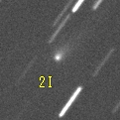
|
Now it is 14.7 mag (Nov. 29, Toshihiko Ikemura, Hirohisa Sato). The orbit is extremely hyperbolic with e=3.35. It is the first interstellar comet in history. It stays 15 mag until January. In the Northern Hemisphere, it will be getting lower after this, and it will be unobservable in mid January. In the Southern Hemisphere, it will be getting higher gradually. Then it will be observable in excellent condition.
Date(TT) R.A. (2000) Decl. Delta r Elong. m1 Best Time(A, h)
Dec. 7 11 25.74 -17 7.7 2.004 2.007 75 15.0 5:24 (342, 36)
Dec. 14 11 37.34 -22 31.3 1.966 2.010 78 15.0 5:29 (349, 32)
|
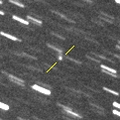
|
In the Southern Hemisphere, it is observable at 14.5 mag from winter to spring. In the Northern Hemisphere, it is not observable until August when it fades down to 17 mag.
Date(TT) R.A. (2000) Decl. Delta r Elong. m1 Best Time(A, h)
Dec. 7 16 29.53 -60 16.4 2.863 2.172 37 15.2 5:24 (325,-30)
Dec. 14 16 48.66 -62 43.1 2.801 2.142 39 15.0 5:29 (328,-30)
|

|
Now it is 15.7 mag (Nov. 29, Toshihiko Ikemura, Hirohisa Sato). It will be fading gradually after this. It will be fainter than 18 mag in April.
Date(TT) R.A. (2000) Decl. Delta r Elong. m1 Best Time(A, h)
Dec. 7 9 39.27 6 2.3 2.284 2.767 109 15.1 4:39 ( 0, 61)
Dec. 14 9 40.06 5 41.4 2.227 2.799 115 15.1 4:12 ( 0, 61)
|
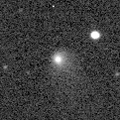
|
Now it is 14.7 mag (Nov. 19, Chris Wyatt). In the Southern Hemisphere, it is observable for a long time. It stays low in the Northern Hemisphere.
Date(TT) R.A. (2000) Decl. Delta r Elong. m1 Best Time(A, h)
Dec. 7 22 54.35 -29 46.5 4.798 4.720 79 15.4 18:18 ( 6, 25)
Dec. 14 22 56.51 -28 22.2 4.932 4.753 73 15.5 18:19 ( 13, 26)
|
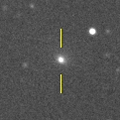
|
Now it is 16.0 mag (Nov. 28, Toshihiko Ikemura, Hirohisa Sato). It stays 15-16 mag until December, and it is observable in good condition.
Date(TT) R.A. (2000) Decl. Delta r Elong. m1 Best Time(A, h)
Dec. 7 23 59.83 -6 42.5 1.942 2.366 102 15.9 18:57 ( 0, 48)
Dec. 14 0 6.48 -5 44.5 2.015 2.359 97 16.0 18:36 ( 0, 49)
|
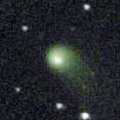
|
It will be fading slowly after this. In the Southern Hemisphere, it stays observable in good condition for a long time, although it becomes low from October to November. It will never be observable after this in the Northern Hemisphere.
Date(TT) R.A. (2000) Decl. Delta r Elong. m1 Best Time(A, h)
Dec. 7 14 24.41 -56 28.7 5.083 4.418 43 16.0 5:24 (330,-15)
Dec. 14 14 27.52 -57 55.5 5.077 4.460 46 16.0 5:29 (334,-13)
|
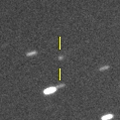
|
Now it is 17.2 mag (Nov. 28, Toshihiko Ikemura, Hirohisa Sato). It will brighten up to 13.5-14 mag from 2020 to 2021. It stays observable in good condition for a long time after this until 2020 summer.
Date(TT) R.A. (2000) Decl. Delta r Elong. m1 Best Time(A, h)
Dec. 7 12 39.84 12 10.8 3.820 3.617 70 16.2 5:24 (298, 52)
Dec. 14 12 46.28 11 54.7 3.706 3.599 76 16.1 5:29 (306, 56)
|
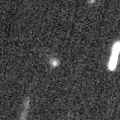
|
Now it is 16.7 mag (Nov. 1, Ken-ichi Kadota). It will brighten up to 10.5 mag from 2020 December to 2021 January. In the Northern Hemisphere, it stays observable in good condition while the comet will be brightening gradually, but it is not observable at the high light. In the Southern Hemisphere, it is not observable for a long time, but it will be observable in good condition after the high light.
Date(TT) R.A. (2000) Decl. Delta r Elong. m1 Best Time(A, h)
Dec. 7 17 19.94 61 29.6 4.477 4.486 84 16.3 18:18 (146, 30)
Dec. 14 17 27.92 60 58.6 4.413 4.422 84 16.2 18:19 (147, 28)
|
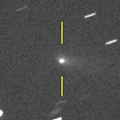
|
Now it is 16.0 mag (Nov. 29, Toshihiko Ikemura, Hirohisa Sato). It stays bright even after the perihelion passage. It will fade out rapidly after this, and it will be fainter than 18 mag in January. However, it may stay bright for some more time.
Date(TT) R.A. (2000) Decl. Delta r Elong. m1 Best Time(A, h)
Dec. 7 3 10.15 -2 0.7 1.945 2.810 145 16.7 22:06 ( 0, 53)
Dec. 14 3 8.86 -1 48.6 2.047 2.864 138 16.9 21:38 ( 0, 53)
|
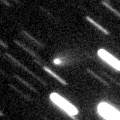
|
Now it is 16.5 mag (Nov. 29, Toshihiko Ikemura, Hirohisa Sato). It will be fading after this, and it will be fainter than 18 mag in January.
Date(TT) R.A. (2000) Decl. Delta r Elong. m1 Best Time(A, h)
Dec. 7 1 42.14 -4 59.3 1.967 2.669 126 16.7 20:38 ( 0, 50)
Dec. 14 1 26.90 -6 17.3 2.129 2.701 115 17.0 19:55 ( 0, 49)
|

|
It stays 16-17 mag for a long time until 2020. It is observable in good condition in the Northern Hemisphere. It is hardly observable in the Southern Hemisphere.
Date(TT) R.A. (2000) Decl. Delta r Elong. m1 Best Time(A, h)
Dec. 7 13 16.55 51 49.5 8.589 8.610 87 16.8 5:24 (228, 55)
Dec. 14 13 20.13 51 59.2 8.530 8.618 91 16.8 5:29 (225, 60)
|
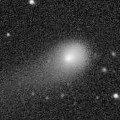
|
Fading. Now it is 17.6 mag (Nov. 28, Toshihiko Ikemura, Hirohisa Sato). It stays 17 mag from autumn to winter. It is observable in good condition in the Northern Hemisphere. It locates low in the Southern Hemisphere.
Date(TT) R.A. (2000) Decl. Delta r Elong. m1 Best Time(A, h)
Dec. 7 9 5.02 23 41.1 6.041 6.619 122 16.9 4:05 ( 0, 79)
Dec. 14 9 0.33 23 43.5 5.983 6.663 130 16.9 3:33 ( 0, 79)
|
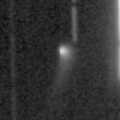
|
Now it is 17.3 mag (Nov. 29, Toshihiko Ikemura, Hirohisa Sato). It will be fading after this. In the Northern Hemisphere, it stays observable in good condition for a long time. In the Southern Hemisphere, it stays extremely low for a long time.
Date(TT) R.A. (2000) Decl. Delta r Elong. m1 Best Time(A, h)
Dec. 7 1 12.05 33 31.9 3.745 4.452 130 17.4 20:08 ( 0, 89)
Dec. 14 1 6.38 31 37.0 3.878 4.494 123 17.5 19:35 ( 0, 87)
|

|
It has not been observed yet in this apparition. Now it is fainter than 21.5 mag (Aug. 4, Erwin Schwab). It was expected to brighten up to 12 mag from August to September. But actually, it must be much fainter than expected. It is observable in good condition in the Northern Hemisphere. It is not observable in the Southern Hemisphere.
Date(TT) R.A. (2000) Decl. Delta r Elong. m1 Best Time(A, h)
Dec. 7 7 17.02 62 23.9 1.106 1.920 133 17.4 2:18 (180, 63)
Dec. 14 7 2.60 62 42.2 1.131 1.969 137 18.0 1:36 (180, 62)
|
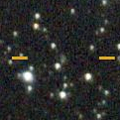
|
Now it is 17.3 mag (Nov. 30, Toshihiko Ikemura, Hirohisa Sato). It will brighten up to 12 mag in winter in 2022.
Date(TT) R.A. (2000) Decl. Delta r Elong. m1 Best Time(A, h)
Dec. 7 22 5.80 42 0.3 7.123 7.306 96 17.4 18:18 (121, 74)
Dec. 14 22 8.31 41 34.7 7.153 7.261 92 17.4 18:19 (116, 69)
|
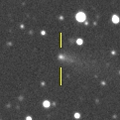
|
Now it is 17.1 mag (Dec. 2, Toshihiko Ikemura, Hirohisa Sato). It will be fading after this, and it will be fainter than 18 mag in late December.
Date(TT) R.A. (2000) Decl. Delta r Elong. m1 Best Time(A, h)
Dec. 7 3 8.36 25 36.9 1.461 2.395 156 17.4 22:05 ( 0, 81)
Dec. 14 3 5.53 24 56.5 1.526 2.422 148 17.7 21:34 ( 0, 80)
|
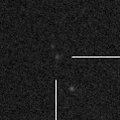
|
Now it is 17.4 mag (Oct. 31, Ken-ichi Kadota). It is observable at 17-18 mag for a long time from late 2019 to early 2021. It will fade out before it passes the perihelion.
Date(TT) R.A. (2000) Decl. Delta r Elong. m1 Best Time(A, h)
Dec. 7 3 0.14 0 40.3 4.294 5.133 145 17.5 21:56 ( 0, 56)
Dec. 14 2 57.32 0 49.4 4.343 5.120 138 17.5 21:26 ( 0, 56)
|

|
Fading now. Now it is 17.1 mag (Oct. 5, M. Masek). In the Southern Hemisphere, it stays observable for a long time until it fades out. In the Northern Hemisphere, it will not be observable after this.
Date(TT) R.A. (2000) Decl. Delta r Elong. m1 Best Time(A, h)
Dec. 7 5 35.62 -55 16.5 5.266 5.550 101 17.5 0:36 ( 0, 0)
Dec. 14 5 23.95 -55 43.3 5.328 5.602 101 17.6 23:51 ( 0, -1)
|
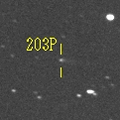
|
Now it is 17.2 mag (Dec. 2, Toshihiko Ikemura, Hirohisa Sato). It is observable at 17-18 mag in good condition in winter. It locates somewhat low in the Southern Hemisphere.
Date(TT) R.A. (2000) Decl. Delta r Elong. m1 Best Time(A, h)
Dec. 7 4 9.87 23 57.6 2.260 3.235 170 17.8 23:06 ( 0, 79)
Dec. 14 4 5.31 23 39.4 2.278 3.230 162 17.8 22:34 ( 0, 79)
|
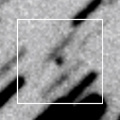
|
Asteroid moving along a comet-like orbit. It stays observable at 17.5 mag from 2020 to 2021. It locates somewhat low in the Northern Hemisphere.
Date(TT) R.A. (2000) Decl. Delta r Elong. m1 Best Time(A, h)
Dec. 7 10 54.44 -23 11.1 6.743 6.657 80 17.8 5:24 (352, 31)
Dec. 14 10 56.47 -23 39.0 6.638 6.650 86 17.8 5:28 ( 0, 31)
|
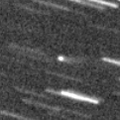
|
First return of a new periodic comet which brightened up to 18 mag in 2014. Now it is 17.4 mag (Nov. 28, Toshihiko Ikemura, Hirohisa Sato). It will be fainter than 18 mag in December. It is observable in good condition in the Northern Hemisphere. It locates extremely low in the Southern Hemisphere.
Date(TT) R.A. (2000) Decl. Delta r Elong. m1 Best Time(A, h)
Dec. 7 8 6.87 43 56.8 0.426 1.320 134 17.8 3:07 (180, 81)
Dec. 14 7 58.60 43 42.3 0.448 1.366 142 18.0 2:31 (180, 81)
|
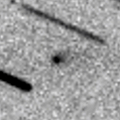
|
Now it is 17.3 mag (Dec. 2, Toshihiko Ikemura, Hirohisa Sato). It was exptected to brighten up to 16.5 mag from October to December. But actually, it is fainter than originally expected. It seems to brighten up to 17-18 mag at best. It is observable in good condition in the Northern Hemisphere. It locates low in the Southern Hemisphere.
Date(TT) R.A. (2000) Decl. Delta r Elong. m1 Best Time(A, h)
Dec. 7 9 56.56 34 30.2 0.997 1.658 113 17.8 4:56 ( 0, 89)
Dec. 14 10 10.44 37 45.8 0.973 1.676 117 17.9 4:42 (180, 87)
|
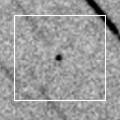
|
Fading now. It passed the perihelion on July 2. Then it must have brightened up to 13 mag, but it was not observable around that time. In the Northern Hemisphere, it stays observable in excellent condition until December when it becomes fainter than 18 mag. In the Southern Hemisphere, it stays locating low.
Date(TT) R.A. (2000) Decl. Delta r Elong. m1 Best Time(A, h)
Dec. 7 0 16.73 27 49.5 1.493 2.143 118 17.9 19:14 ( 0, 83)
Dec. 14 0 17.85 25 58.6 1.613 2.178 111 18.2 18:47 ( 0, 81)
|
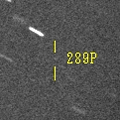
|
It brighted rapidly from 20.5 mag up to 18.5 mag in September. However, the brightness evolution has stopped since October. Now it is very faint as 18.9 mag (Nov. 21, Katsumi Yoshimoto). It will approaches to Earth down to 0.09 a.u. in early January, and it will brighten up to 15.5 mag. It will be obesrvable in excellent condition in the Northern Hemisphere. In the Southern Hemisphere, it will not be observable at the high light.
Date(TT) R.A. (2000) Decl. Delta r Elong. m1 Best Time(A, h)
Dec. 7 22 36.42 -12 43.8 0.245 0.980 81 18.3 18:18 ( 14, 41)
Dec. 14 22 45.07 -7 43.7 0.207 0.964 78 18.2 18:19 ( 23, 45)
|
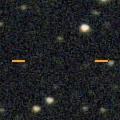
|
Now it is very faint as 19.7 mag (Oct. 25, Toshihiko Ikemura, Hirohisa Sato). It brightened up to 15.5 mag in 1997, and 17 mag in 2008, however, it is much fainter in this apparition.
Date(TT) R.A. (2000) Decl. Delta r Elong. m1 Best Time(A, h)
Dec. 7 1 5.61 12 55.0 2.704 3.373 125 20.4 20:02 ( 0, 68)
Dec. 14 1 7.04 12 33.0 2.797 3.382 118 20.5 19:36 ( 0, 68)
|
|
![]()
 C/2019 L3 ( ATLAS )
C/2019 L3 ( ATLAS ) 261P/Larson
261P/Larson 173P/Mueller 5
173P/Mueller 5 C/2016 N6 ( PanSTARRS )
C/2016 N6 ( PanSTARRS ) 203P/Korlevic
203P/Korlevic A/2019 C1
A/2019 C1 384P/2019 O1 ( Kowalski )
384P/2019 O1 ( Kowalski ) 76P/West-Kohoutek-Ikemura
76P/West-Kohoutek-Ikemura (3200) Phaethon
(3200) Phaethon 289P/Blanpain
289P/Blanpain 200P/Larsen
200P/Larsen![]()



































